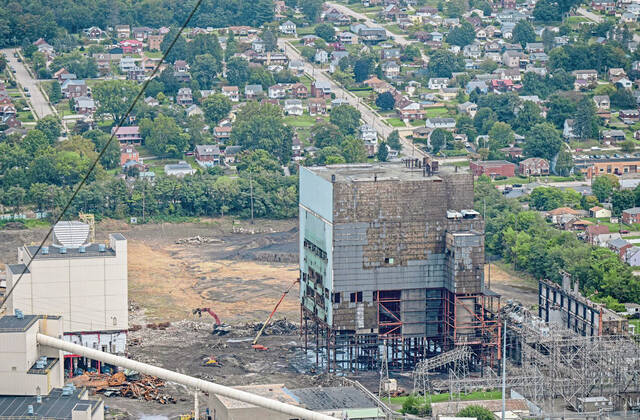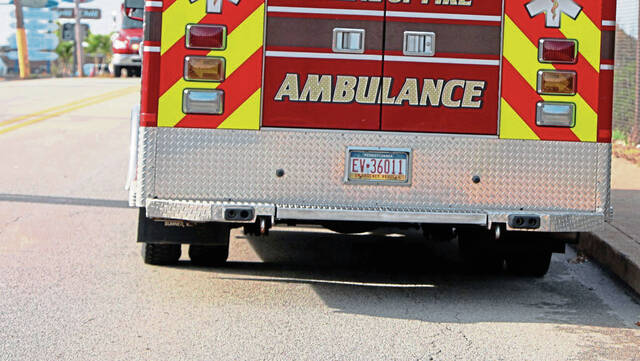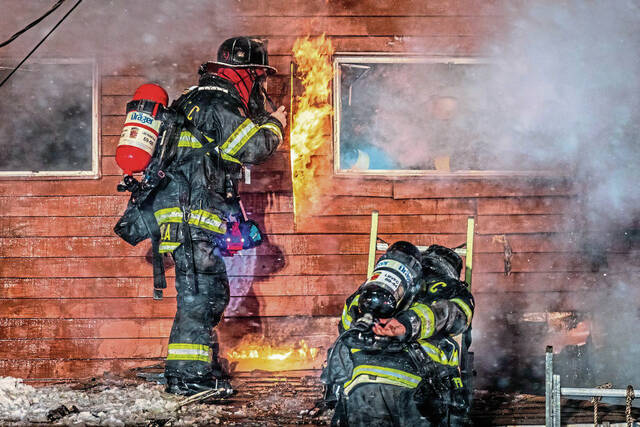The scheduled implosion of the boiler house at the Cheswick Generating Station in Springdale has been delayed as a judge continues to take testimony over a requested injunction to stop the demolition.
The implosion of the building was scheduled for 8 a.m. Friday.
However, 16 community residents filed a lawsuit Friday against the companies involved — Charah Solutions, Controlled Demolition Inc., Grant Mackay Co. and Civil and Environmental Consultants Inc. — and a request for an injunction Monday.
Common Pleas Judge John T. McVay heard testimony on the injunction Wednesday afternoon from two state Department of Environmental Protection employees involved in the permitting process for the demolition but said he needs more.
The hearing concluded just after 5 p.m. and will resume at 1 p.m. Thursday.
In the meantime, the attorneys representing the companies involved in the blasting said if they didn’t have an answer by 5 p.m. Wednesday, the implosion had to be put on hold.
As the hearing concluded, attorney Tim Smith, who represents Grant Mackay Co., said the scheduled blast is postponed.
“Friday’s gone,” he said. “That opportunity is missed.”
Road closures that had been planned for Friday have been canceled.
At issue are claims by the plaintiffs that their homes sustained damage from the June 2 implosion of two towering chimney stacks at the former coal-fired power generating station, including broken windows, displaced door frames and flyrock — pieces of concrete debris — in their yards.
There also was a large dust cloud from that implosion.
On Wednesday, two employees with the state DEP testified about the process used to award the blasting permit for the site.
Adam Snyder, a blasting and explosives inspector, said he was onsite for the June 2 implosion of the 552-foot and 750-foot chimney stacks.
Shortly after the blast, Snyder told the judge, that he and his supervisor were forced to retreat to his vehicle because of the dust.
“The dust cloud coming toward us was rather thick, heavy,” he said. “It did not feel like a safe place to be standing out inside of it.”
After about 15 minutes, he said, he got out of his car and surveyed for damage.
“I’d never seen a chimney behave in that manner from the ones I’ve observed,” he said.
The DEP, he said, expected the debris would have been contained to the power station property.
As he walked the nearby streets, Snyder said he saw trees that had been dislodged or were leaning and power lines that had been impacted.
His investigation also revealed damage to area homes.
Sensors near the site recorded decibel readings from the implosion as high as 164.3. The permit required they not be higher than 142 to prevent damage to other properties.
The owners of the former power station site were cited for those violations and several others for a total of 17, Snyder said.
During the permitting process, the companies requested a higher blanket limit of 158 decibels, Snyder said, but the DEP rejected the proposal.
Chad Meyer, environmental program manager for DEP’s New Stanton District Mining Office, testified that his agency was not happy with the June implosion.
Because of that, he said, DEP listed several additional conditions for the companies to meet before they could obtain the permit for the boiler house demolition.
Among them, the companies were required to submit a dust mitigation plan to the Allegheny County Health Department for approval, Meyer said.
They also washed down the boiler house structure to try to reduce dust from the implosion.
As part of those conditions, the companies also are required to build plywood and wood frame structures to block windows of nearby structures on Porter Street and Standard Avenue; block roadways; and create a hotline for residents to call with questions or concerns about property damage.
In addition, Meyer said, the companies must monitor the atmosphere and weather the day of the implosion to ensure there is not a thermal inversion — which would seal the effect of the blast close to the ground and trap it in the valley.
“We wanted to make sure we were going above and beyond to adequately protect the citizens of the surrounding communities,” Meyer said. He said the company “met all of our requests.”
Meyer testified that the boiler house implosion will be different for several reasons, including that the structure is significantly shorter; there is a different fall path; it’s an open building versus concrete stacks, and there is an office building on the property that will serve as a block to the air blast from the detonation.
“The structures are different. The explosives are different. How they interact with the structures are different,” Meyer said.
Attorneys for the plaintiffs raised questions about asbestos on the property, implying that it had not yet all been remediated.
But Meyer said that based on the health department’s approval of the dust mitigation plan, the asbestos is gone.
“From my understanding, all asbestos has been abated and removed,” he said.
Judge McVay told the attorneys he needs to hear testimony from the health department before reaching a decision.
In the meantime, some of the plaintiffs in the injunction went before Springdale Council on Tuesday night to raise their concerns.
Borough officials said that when state and federal authorities issue the permit, there’s not much else they can do to prevent the implosion.
“They’re regulated by a different entity,” said borough Solicitor Craig Alexander.
Others asked if the building could be taken down another way.
“I want to make it very clear and put it on record that I strongly oppose this implosion taking place in our town with any type of explosive devices involved,” said Brittni Bair, one of the plaintiffs.
But officials have said previously that with a wrecking ball or high-reaching excavator, buildings are slowly broken up and create dust over months. With the felling of the boiler house, the same quantity and type of dust is released in seconds and may linger in the area for a couple of minutes, before clean-up begins.








